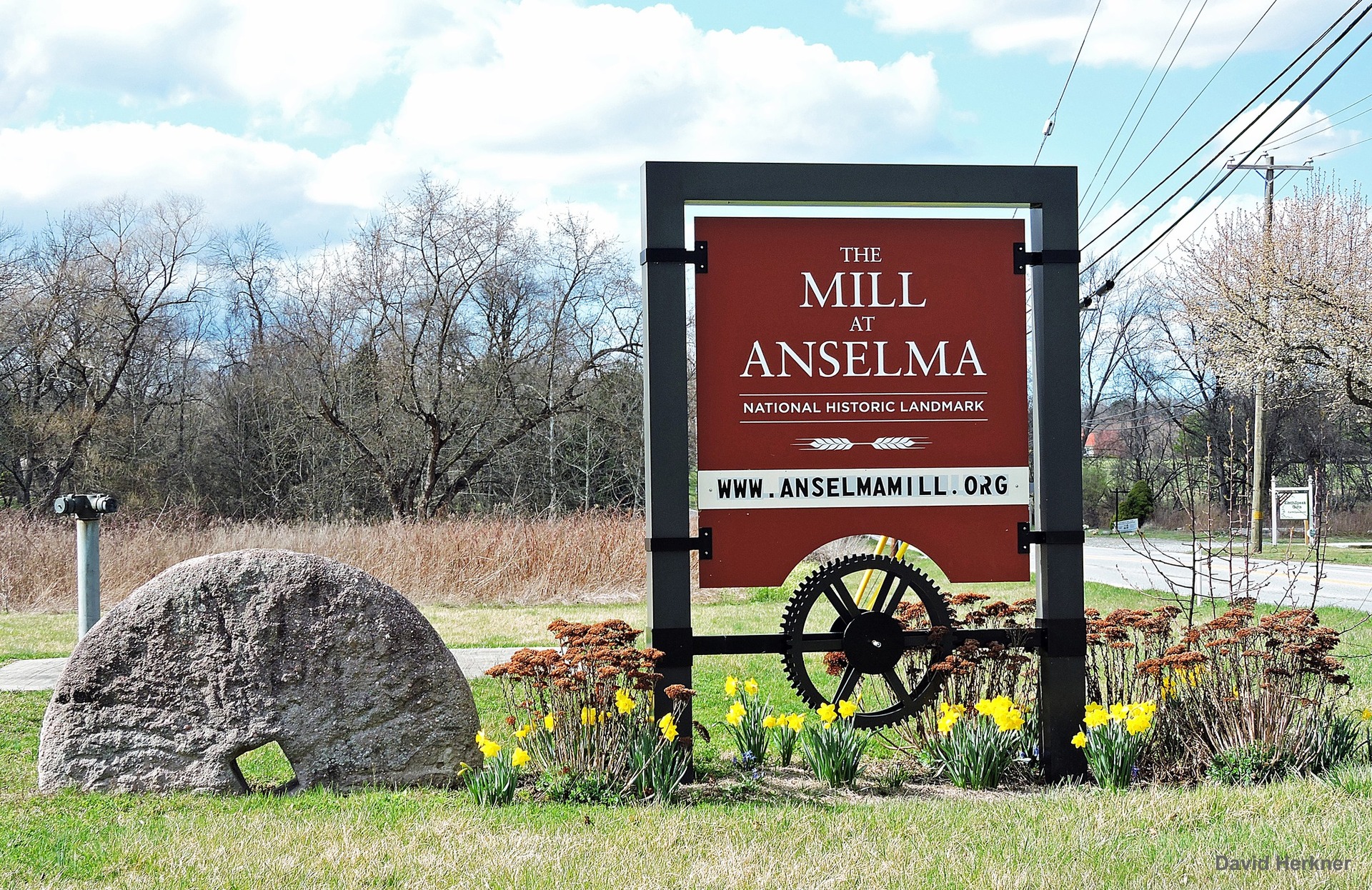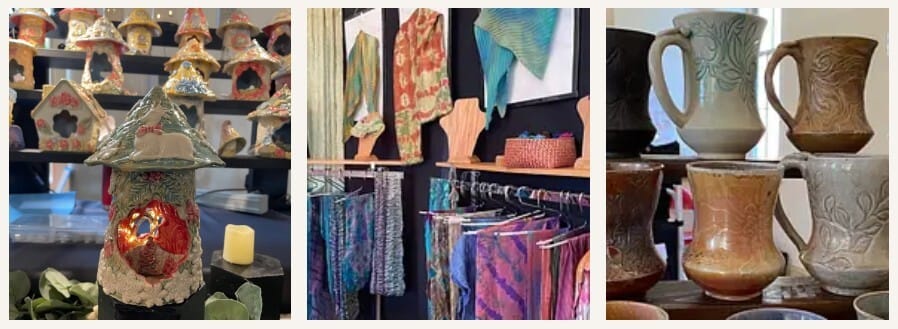- News from the Mill at Anselma
- Posts
- News from the Mill at Anselma
News from the Mill at Anselma
August 2025
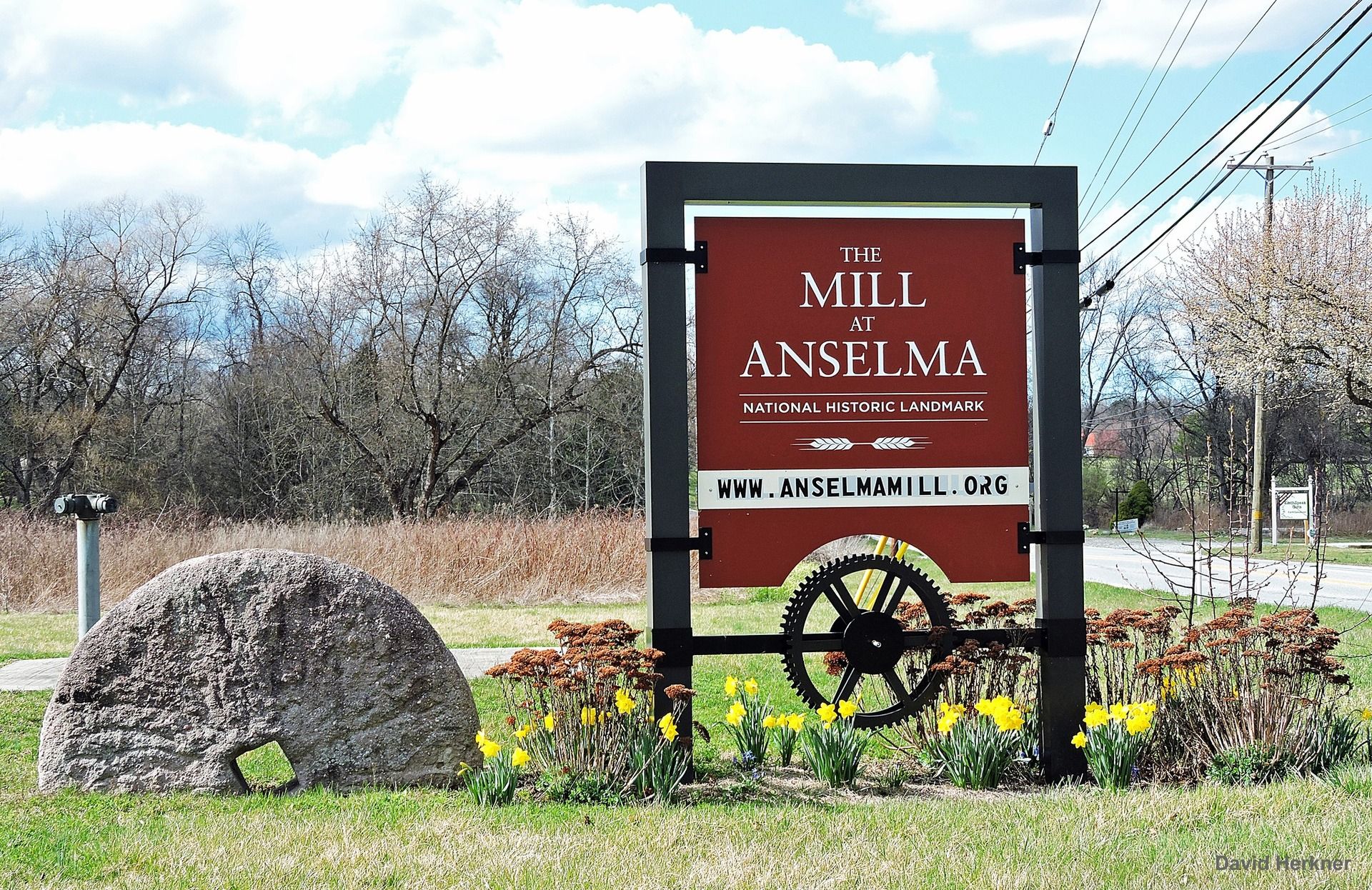

The Mill's mission is to preserve and interpret the heritage and technology of the Mill at Anselma through community engagement, demonstration, and education.
UPCOMING EVENTS
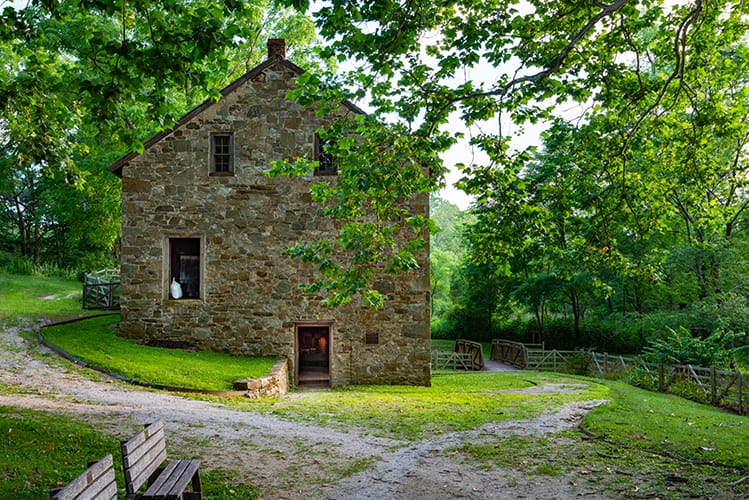
Photo credit: Anita Bower
August 9th: Demo Day
Join us at the Mill on Saturday, August 9th, for a special Demo Day! From 10:00 AM to 4:00 PM, explore the Mill as it comes to life with demonstrations of the grinding process, just as it operated in the colonial era. The last tour begins at 3:00 PM. Mill demonstrations take place every second Saturday of the month from April through December.
September 6th: Lecture Series - Mill Technology
Join us on Saturday, September 6th from 1:00 to 2:00 PM for a fascinating lecture on the inner workings of the Mill at Anselma. Led by our miller, Dave Rollenhagen, this presentation will explore the technical and engineering marvels behind the most complete known example of a custom grain mill in the United States. Discover how the Mill still operates on its original 1747 powertrain, and gain insight into the ingenuity that has kept it running for nearly three centuries. This is a unique opportunity to learn about historic technology in action—perfect for history buffs, engineering enthusiasts, and curious minds of all ages.
🍎🍎🍎September 27th: Cider Fest 🍎🍎🍎
Following the tremendous success of the past two years, we’re excited to bring Cider Fest back to the Mill on Saturday, September 27th from 10:00 AM to 4:00 PM (Rain date: October 4th). Join us for a full day of family-friendly fun, including children’s games, face painting, raffles, and a fall-themed scavenger hunt around our scenic property. Enjoy delicious food and unique goods from local vendors, learn about the history of cider making, and take a tour of the historic Mill. Admission: $10 for adults | $5 for children and seniors | Free for Mill members. Each admission includes a complimentary cup of cider or a fresh apple! Celebrate the season with us at this favorite community tradition!
Weekend Mill Tours
Step into history and join us at The Mill at Anselma every Saturday from 10 am to 4 p.m. and Sunday from 1 p.m. to 4 p.m. to immerse yourself in the colonial-era milling process. And if you're craving some outdoor adventure, our nature trail awaits you daily, offering serene walks amidst nature's beauty from dawn to dusk.
Check our website, Facebook, and Instagram pages for upcoming events.

SUMMER HIGHLIGHTS
A Landmark Anniversary for a National Treasure
This year marks a major milestone for the Mill at Anselma: it has been 20 years since our restoration was completed and the site was officially designated a National Historic Landmark.
In April 2005, the U.S. Department of the Interior recognized the Mill at Anselma as a National Historic Landmark for its extraordinary preservation and significance as one of the most complete and continuously operating colonial-era grist mills in the country.
But the road to that designation began several years earlier. In 1998, the Mill at Anselma Preservation and Educational Trust was formed to take on the enormous task of restoring and protecting the site. With the help of generous funders—including the Pew Charitable Trusts, the National Park Service, West Pikeland Township, the William Penn Foundation, the Pennsylvania Historical and Museum Commission, the Arcadia Foundation, the Stewart Huston Charitable Trust, and many dedicated community members—a comprehensive restoration effort took place from 2001 to 2005.
The work involved stabilizing and restoring the historic mill building and its original milling equipment, reconstructing the water wheel and forebay, and preserving surrounding structures such as the Simmers-Collins House, spring house, chicken coop, and wagon barn.
In 2004, we welcomed more than 1,200 guests for the mill’s public reopening—an unforgettable day that celebrated both our local heritage and the beginning of a new chapter as a public historic site. Just a few months later, in April 2005, the Mill at Anselma received its National Historic Landmark designation—securing its place in the nation’s story.
Today, we continue to honor that legacy by offering milling demonstrations, educational tours, and seasonal programs that bring history to life for visitors of all ages.
As we reflect on these past 20 years, we extend our heartfelt gratitude to the many supporters, volunteers, and community partners who have helped preserve and promote the Mill at Anselma. This anniversary isn’t just about the past—it’s about the future we’re building together.
Thank you for being part of our story!
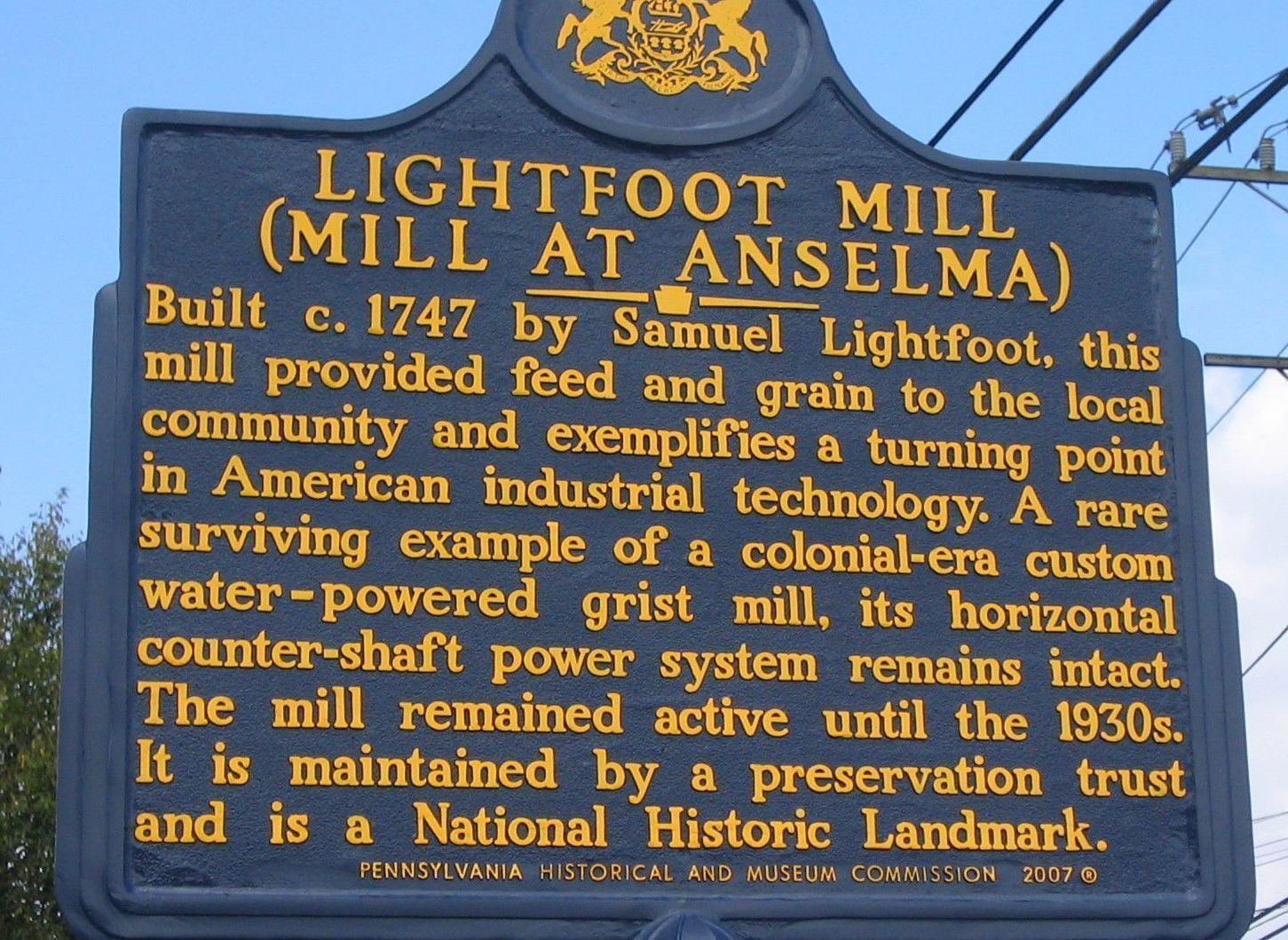
History in the Making: Wheat Grinding Stones Come to Life for the First Time Since 1880
We’re making history at the Mill at Anselma—literally! On Friday, August 8th, we will be using our historic wheat grinding stones to produce flour for the first time since 1880. That’s nearly 150 years of silence finally broken by the rhythmic turning of the same stones once used by millers in the 19th century.
If you’ve visited the Mill before, you may know that we regularly grind flour using our corn grinding stones—the set that’s been in use since the Mill’s restoration. That flour is stone-ground on-site and sold at our Visitor Center, where it’s become a favorite for local bakers and history enthusiasts alike. But this upcoming grind is something special: for the first time in modern operation, our wheat stones will be powering flour production once again.
This is more than just a technical change. It’s a revival of the Mill’s full historic capacity and an important step in reconnecting with our site’s agricultural and mechanical heritage. The wheat stones were traditionally used to grind finer flours for bread baking, making this grind a particularly meaningful one for those who value the legacy of food, farming, and craftsmanship.
The flour ground on August 8th will be available for purchase at the Visitor Center—so you can take home a truly one-of-a-kind piece of history. Whether you’re an avid home baker or simply love a good story, this flour connects you directly to the past.
We’ll be sharing photos and behind-the-scenes glimpses on our social media, so be sure to follow along on Instagram, Facebook, and our website. And the next time you visit, ask our team about the wheat stones—we’d love to share more about the process and what it took to bring them back into action.
Thank you, as always, for being part of our Mill community. Your support helps keep the wheels (and stones!) turning.
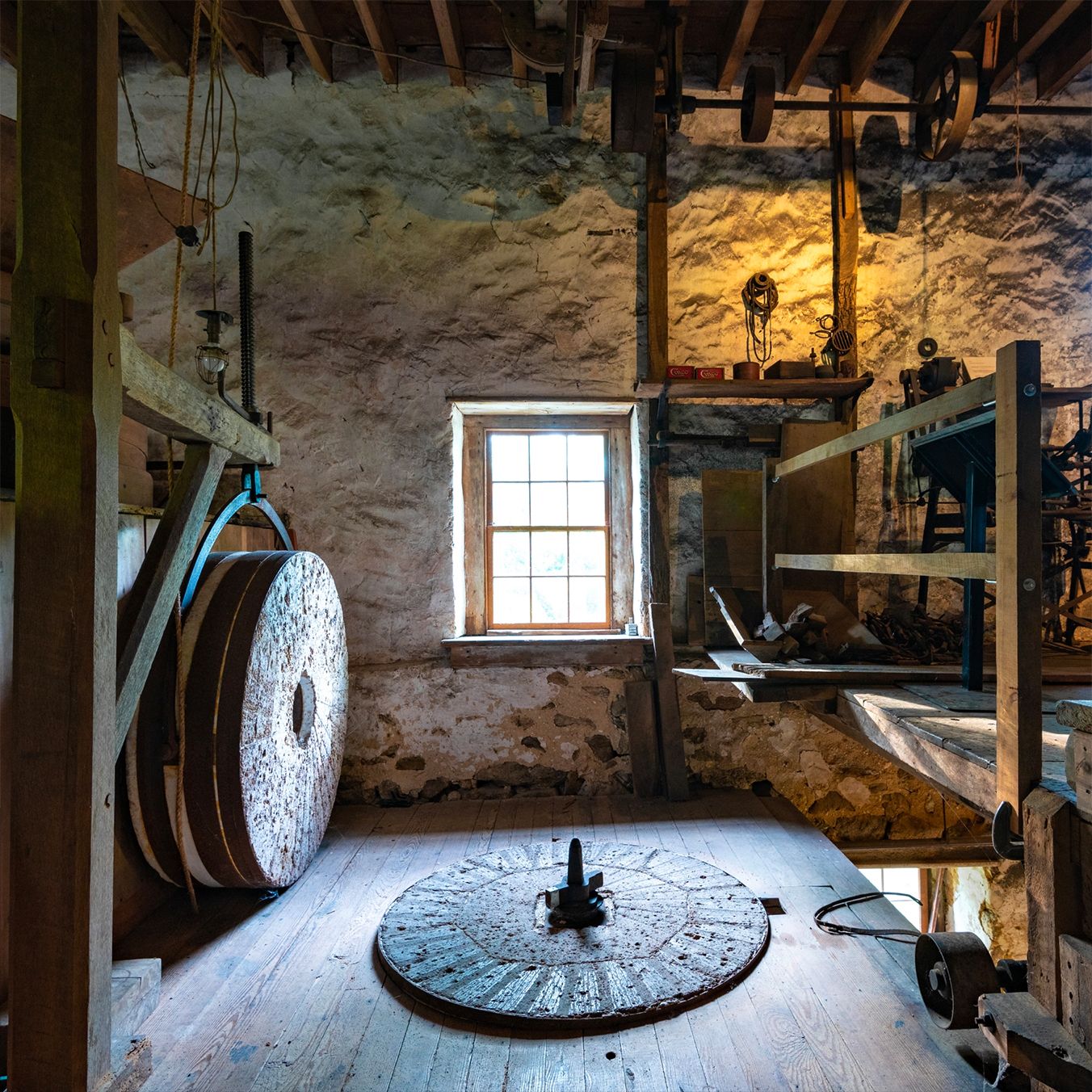
Photo credit: Anita Bower
HISTORICAL REMARK
The Story of the Stones: A Look at the Millstones of the Mill at Anselma
Tucked along Pickering Creek in Chester Springs, Pennsylvania, the Mill at Anselma has stood for nearly 280 years as a testament to American ingenuity, agricultural tradition, and mechanical craftsmanship. Central to its enduring legacy are the millstones—massive circular stones used to grind grain into flour or meal. These stones are not merely tools; they are artifacts of transatlantic trade, early industrial precision, and centuries of rural life.
What Are Millstones? Millstones work in pairs—a bedstone that remains stationary and a runner stone that rotates above it. Grain is fed through the center (the “eye”) and ground between the grooved stone surfaces as the runner turns. The resulting flour or meal is then funneled out the sides.
The success of a mill depended heavily on the quality, maintenance, and type of millstones it used. Millers needed to select the right stone for the grain being ground and to regularly "dress" or resharpen the furrows etched into the stone surface.
European Origins: The French Buhr The most prized millstones in colonial America were French buhrstones—volcanic quartz stones quarried near Paris. They were renowned for their hardness, self-sharpening texture, and ability to produce fine flour. French buhrstones were not single solid pieces but mosaics of stone segments cemented together with plaster and bound by iron bands. Transporting them across the Atlantic and up inland creeks was expensive and labor-intensive, but millers who used them were considered elite craftsmen.
Millstones at the Mill at Anselma: The Mill at Anselma, built around 1747 by Samuel Lightfoot, originally used locally quarried sandstone millstones typical of the colonial era. These would have been effective for coarse grinding, such as producing animal feed or cornmeal. But as consumer demand shifted and wheat production increased in the 18th and 19th centuries, Anselma’s millers upgraded their equipment.
At the heart of the mill today is a French buhrstone set used for wheat flour grinding. This set dates to the late 18th or early 19th century and was used to produce fine white flour—a valuable commodity. These millstones are housed within a fully restored and functional colonial-era transmission system, driving the mill to operate exactly as it did two centuries ago.
In addition to the buhrstones, the mill also houses a gray granite set used for corn grinding. This type of stone, sourced more locally, is better suited for the oilier, coarser cornmeal traditionally used in American cooking.
A Rare Living Machine: What makes the Mill at Anselma especially unique is that these original or historically accurate stones are still in operation. Visitors can see the buhrstones in action during special demonstration days, where wheat is milled into flour much as it was in the 1700s. These grinding demonstrations offer a rare sensory glimpse into pre-industrial food production: the sound of the stones, the vibration of the gears, and the aroma of freshly ground flour.
Preservation of Craft and History: In April 2005, the Mill at Anselma was designated a National Historic Landmark, in part because of its remarkably preserved milling equipment and original stonework. The millstones are not just tools—they are cultural touchstones. They embody the transition from agrarian hand-milling to powered mechanization, from subsistence farming to commercial agriculture.
Every groove in the runner stone, every scratch on the bedstone, tells a story: of local farmers hauling in sacks of grain, of millers trained in the rare art of stone dressing, and of a rural economy centered on the rhythms of the wheel and stone.
Partner News: Art, History & Happenings at Historic Yellow Springs
Town Tours & Village Walks at Historic Yellow Springs
August 21, 5:00 pm - 7:00 pm
The summer program, Town Tours and Village Walks, returns for its 31st year with the theme of "Untold Stories." This year's programs will focus on people and places that are not the economic or social elite, war heroes, or celebrities. The featured sites will represent the everyday citizens and places of Chester County that are the foundation of our history and heritage. Join us and learn so many "untold stories" from over 300 years of history at Yellow Springs.
Fine Arts & Craft Show Call For Artists
Historic Yellow Springs is excited to announce the Call for Artists for the 2025 Fine Arts & Craft Show! This juried exhibition celebrates exceptional artistry in a variety of mediums, including painting, ceramics, jewelry, wood, glass, and more. We invite talented artists and fine craft artisans to apply and showcase their work in the unique and inspiring setting of our historic village. Jury applications are due by September 19.
Yellow Springs Ceramics National, Call for Artists - Applications Close October 4th.
Historic Yellow Springs is pleased to announce the Call for Artists for the 2025 Yellow Springs Ceramics National. This juried show presents bodies of work by each artist, thoughtfully interwoven throughout the gallery space to foster dialogue and visual interplay. With a focus on material innovation, exceptional craftsmanship, and the interplay between functional and sculptural approaches, The Yellow Springs Ceramics National celebrates the vibrant voices shaping contemporary ceramics across the country today. Taylor Sijan has been announced as the 2025 Yellow Springs Ceramics National Juror!
Historic Yellow Springs 5-week art classes and one-day workshops.
Second Summer Session art classes at Historic Yellow Springs begin August 11th, 2025. These five-week sessions give you the opportunity for creative exploration without filling your entire summer. Don’t miss the chance to end the summer on a creative and artistic note - Register today for the second 5-week session of the summer.
LINK to 5-week sessions: https://yellowsprings.coursestorm.com/category/5-week-course?page=2
Looking for a one-day art class? Historic Yellow Springs’ one-day workshops are perfect for meeting your busy schedule and artistic needs. With several to choose from you are sure to find something that inspires and engages your creativity.
LINK to Workshops: https://yellowsprings.coursestorm.com/category/workshop
Support Us!
We are looking for corporate sponsors and private donors who are ready and willing to support our historical site.
Our non-profit organization highly depends on community support, including time that you could volunteer with us. If you would like to get involved, you can become a volunteer and join our communication, marketing, event planning, and operations teams.
Rent the Mill for your next event!
The Mill at Anselma is a pristine 22-acre property that plays host to numerous attractions in addition to the historical buildings on site. The Mill is open for your next event, from weddings to graduation parties, as well as for filming and photography! Site rentals can be done through our website, where you can also choose from our list of caterers, photographers and vendors who specialize in making your event one to remember!

In addition to events, we offer private tours and different membership options for those looking to support our efforts here at the Mill at Anselma! Please check our website or come on down and meet us in person to secure your membership today! We are also eagerly searching for new enthusiastic volunteers and would love to have you join our team! Please reach out to us for more details regarding private tours, membership options, and volunteer work!
Check out the Junebug Weddings blog featuring The Mill at Anselma: Romantic Rosy and Rust Pennsylvania Wedding Inspiration at Anselma Mill
 |  |
ABOUT THE MILL
The Mill at Anselma Preservation and Educational Trust, a 501c3 non-profit corporation, was formed in 1998 with the vision to create an innovative historical attraction at the Mill. Through demonstrations, sensory experiences, and the information provided by our highly knowledgeable tour guides, we hope to illustrate the evolution of technology and the impact of change in commerce, free enterprise, and transportation on American life over three centuries.
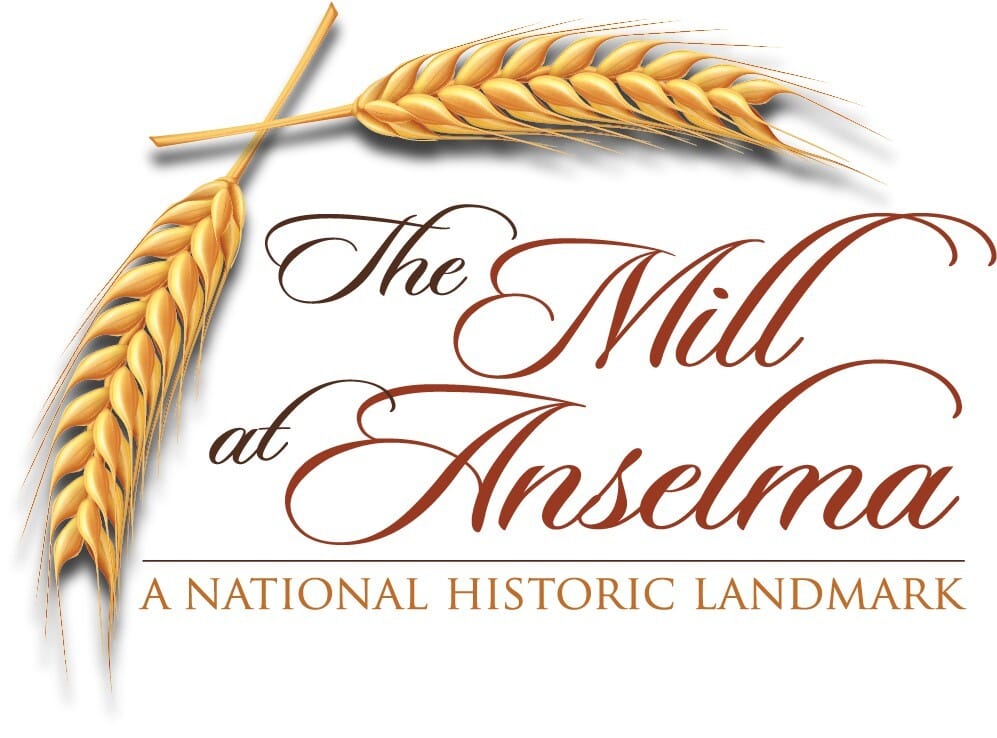
The newsletter was prepared by the Mill’s marketing and communications team.
Copyright © 2025. The Mill at Anselma Preservation and Educational Trust, Inc. All rights reserved.
Address:
The Mill at Anselma Preservation and Educational Trust, Inc.
1730 Conestoga Road
Chester Springs, PA 19425
610.827.1900
www.anselmamill.org
